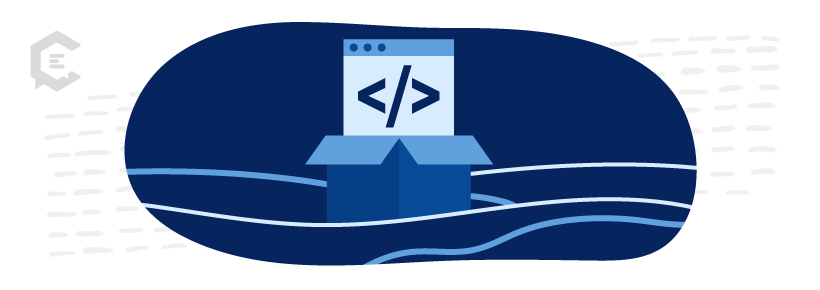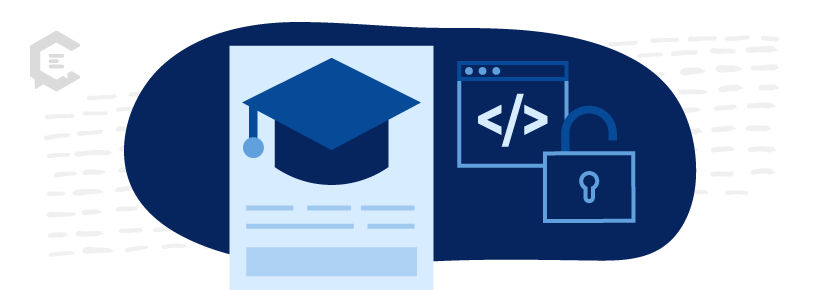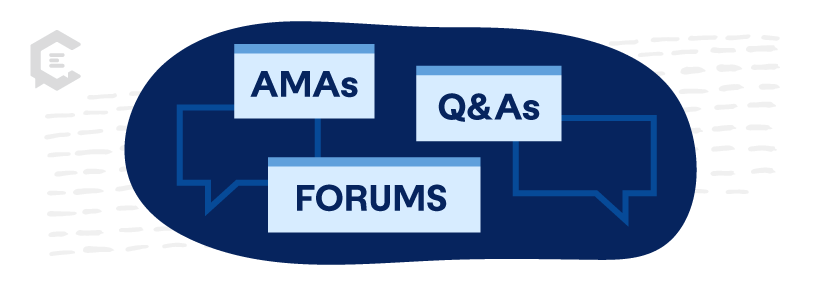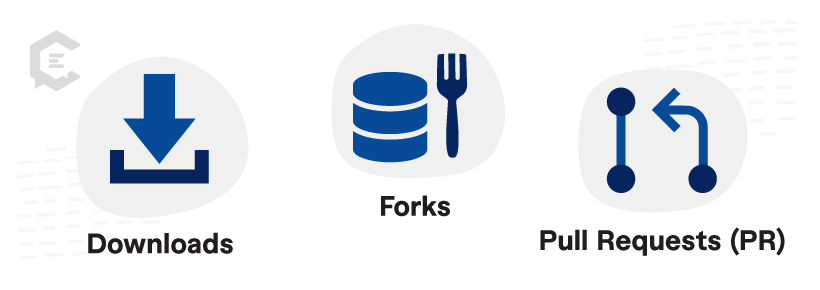An excellent codebase is key to getting others to adopt your software. But it’s not enough on its own.
For people to find and use your open-source software, you need to promote it. Open-source software projects thrive on community involvement, contributions, and, most importantly, visibility. That makes content marketing a natural fit since it’s designed to drive engagement and collaboration.
In this article, we’ll discuss the challenges and opportunities of the open-source software landscape. Then we’ll talk about the best strategies to amplify project visibility and how to foster collaboration and community engagement.

The Open-Source Software Landscape: Challenges and Opportunities
Open-source software is a crowded field. At the end of 2022, the Maven Central Repository held more than 2.5 million open-source JavaScript projects alone. There’s a lot of competition, from AI and Machine Learning startups to major players like MySQL. But open-source software’s collaborative, community-oriented nature also provides a tremendous opportunity to build a following for your project.
Content marketing for open-source software projects can be a real game-changer if you understand how to leverage its power.
What to watch out for
Here are a few things to keep in mind as you build your Tech and SaaS content marketing strategy.
Navigating the open-source ecosystem
The open-source ecosystem has its own rules and norms for those who participate. If you’re unsure exactly how users are navigating their way through, it may be worth taking some time to observe.
Persona development
Great content marketing relies on your ability to create a marketing persona to then use as a compass for your content. Once you have one in place, you can develop content that addresses that persona’s needs. The better you understand how people interact with an open-source ecosystem, the greater your ability to meet their needs and solve their problems.
The value of community
Open-source software content marketing must address the core tenet of the open-source ecosystem: community. Remember, in the open-source world, users aren’t just taking bits of existing code. They’re also editing, shaping, and changing that code.
For any open-source project to find success, you must anchor it in a sense of community. And this applies to the way you market it as well. Strive to create authoritative and engaging content, and write it in a way that encourages participation and collaboration.
Balancing technical and non-technical content
It’s important to remember that open-source software projects draw users of widely disparate tech backgrounds. Some people are highly technical and will appreciate content that gives the specific nuts and bolts of how your software works. Just make sure to use technical writers with the proper expertise to write on it.
Others are far less experienced in tech. They typically prefer content that explains what they can do with your project in layman’s terms. And, of course, both groups consist of human beings. Never be afraid to write non-technical content. Just make sure you relate it to your project or software development as a whole.
Check out our guide on balancing technical with non-technical content if you need some support.
Amplifying Project Visibility: Top Content Strategies
It’s generally best to combine and integrate different types of content in your overall content plan. This helps you address a wide range of topics from many different angles.
Showcasing case studies and real-world implementations
Case studies and real-world implementations are instrumental in the tech and SaaS industry. They help to answer the fundamental question, “What’s in it for me?” Seeing how your open-source software works for others in similar scenarios shows users what to expect. It also helps them visualize creative ways to utilize your project to meet their needs.
Leveraging User-Generated Content and testimonials
Because open-source ventures are all about community, existing users generally have a lot to say. In addition to editing the code, many users write their own guides and other documentation for how to use open-source software in novel ways. You can leverage this user-generated content by linking to it in your own content. Be sure to call out any testimonials that your users create as well!
Educative content: Tutorials, webinars, and workshops
No matter how experienced a particular developer might be, your specific project offers something new. Educative content teaches people what your particular open-source software does and how to use it. Written content types such as blog posts and infographics work well but also think more broadly.
- Tutorials give users the opportunity to dive in and start using your software as they learn. They can be especially helpful for people without a strong tech background.
- Workshops let users of all different backgrounds work with members of your team to use your software in creative ways. You might consider holding separate workshops to address specific project types.
- Webinars allow participants to interact directly with members of your team or expert-level users. They can ask questions about specific use cases and learn benefits they may never have considered.
When developing educative content, don’t forget about storytelling! You might start a webinar by telling the tale of a company that streamlined its operations by using your software in a certain way. Or begin a tutorial by asking, “Have you ever wanted to….” And then use the tutorial to explain how your software helps them do that thing.
If you’re not sure where to start your Tech and SaaS content creation, we’ve got five ideas to drive your strategy.
Fostering Collaboration and Community Engagement
Since the open-source community is all about collaboration, your content should help to boost engagement. Here are a couple of ideas.
Spotlighting contributors and community achievements
You don’t need to limit your content marketing in software to posts that directly address your project. Take the opportunity to spotlight the community you are building.
Is a user doing something new and interesting with the code? Write a profile. Did the community as a whole achieve something great? Write it up! People love getting rewards for their efforts; a simple shoutout can encourage others to get more involved.
Hosting interactive AMAs, forums, and Q&A sessions
You can take interactivity and community engagement to a whole new level by getting the design team involved.
- AMAs. “Ask me anything” events give users an open mic to ask questions on any topic. Make sure your designers are ready for anything, though, as people may ask about personal topics too. They don’t have to answer, but the more open they’re willing to be, the better.
- Forums. This old-school method of collaboration still works well today. Start a forum section somewhere on your website where people can discuss different aspects of your software. Be sure to moderate it closely, though! Remove spam right away and keep the discussions on track.
- Q&As. These are typically moderated and somewhat more formal than AMAs. If you want to keep the focus on your project and how it works, you may prefer a Q&A session.
Collaborative content creation: Wikis, docs, and contribution guides
Once you have started to build a community around your software, start inviting users to work on collaborative content. Wikis, documents, and guides are just a few projects that community members can build together.
You’ll likely need to use a combination of these strategies to find real success with your open-source venture. For inspiration, look at the different content marketing techniques used by some small developers in the open-source marketplace. See how they mix a variety of content types that rely on storytelling?
Tracking Success: Metrics and Feedback Loops
Of course, open-source projects are only successful when people actually use them. Be sure to track your success by measuring metrics and gathering feedback.
There are three key engagement metrics for open-source software projects:
- Downloads. How many people actually download your software each month? Are those numbers growing month-over-month and year-over-year?
- Forks. Like a fork in the road, a software fork basically occurs when developers copy a portion of the original code and make fundamental changes to it. The fork does not replace the original code but rather creates an alternative version. The more forks there are, the more people interact with your project.
- Pull requests. Pull requests or PRs, are how developers get their forks uploaded to the repository. A pull request triggers a review process in which project maintainers evaluate the fork’s usefulness. If approved, the fork is uploaded to the repository, which lives alongside the original code. Pull requests show developers find your code useful enough to offer permanent alternative versions.
You’ll also want to check in with your community regularly. Send out surveys. Seek feedback in your community forums. Always ask what you can do to further meet your participants’ needs.
Help Your Open-Source Project Thrive Through Content Marketing
The open-source world runs on community. This makes it easy to support your project through content marketing. Focus on strategies that build and sustain engagement while also driving traffic. From Q&As to case studies to collaborative Wikis, the more engaged you keep your community members, the more success your project will see.
And if you need top-notch writers from the tech and SaaS industry to help support your open-source project, ClearVoice can help! Talk to a content specialist today to see how we can match you with creators who fit your exact needs and budget.






